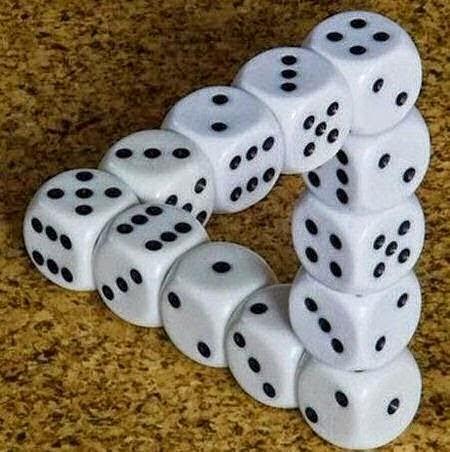
An impossible object is a picture of an object that looks three-dimensional but cannot be a two-dimensional projection of a real 3D object. It is a type of optical illusion. One of the best descriptions I have read about them was this one: "impossible objects are reasonable parts put together in un-reasonable ways".
And this is why they work: we interpret them as a two dimensional projection of a three dimensional object. So, there are two possibilities to make them:
1) draw them, like the guy in this video.
2) or take a picture and work on it with Photoshop-like software!
Science and Impossible Objects
It is easy to imagine, that impossible object artists can use science to impress viewers. For example here the authors show that a particular class of impossible figures can be described in terms of two complementary halves.
But optical illusion is also a very good example, where science can and does make use of arts: groups of scientists could get important insights into the development of mechanisms for processing pictorial depth cues that allow adults to extract three-dimensional structure from pictures of objects . (+) There are researches on "implicit memory for possible and impossible objects" or on the effects of "size and reflection" (using impossible objects). I have no doubt that the number of studies and categories making use of them will raise in the future.
History

magpie on the gallows by Piter Bruegel
Probably, the first painted impossible object was The magpie on the gallows of 1568 (Hessisches Landesmuseum, Darmstadt, Germany). There, we see a clearly recognizable impossible four-bar. However, this masterwork is not even named in Wikipedia's article on impossible objects until now.Today, the Swedish artist Oscar Reutersvärd , who drew the Penrose triangle in 1934, some years before the Penroses, is called the father of impossible figures. You probably ask, why it is called Penrose triangle and not Reutersvärd triangle. Well, in 1956, the British psychiatrist Lionel Penrose and his mathematician son, Roger Penrose, submitted a short article to the British Journal of Psychology titled "Impossible Objects: A Special Type of Visual Illusion". This was illustrated with the Penrose triangle and Penrose stairs. The article referred to Escher, whose work had sparked their interest in the subject, but not Reutersvärd, of whom they were unaware.

